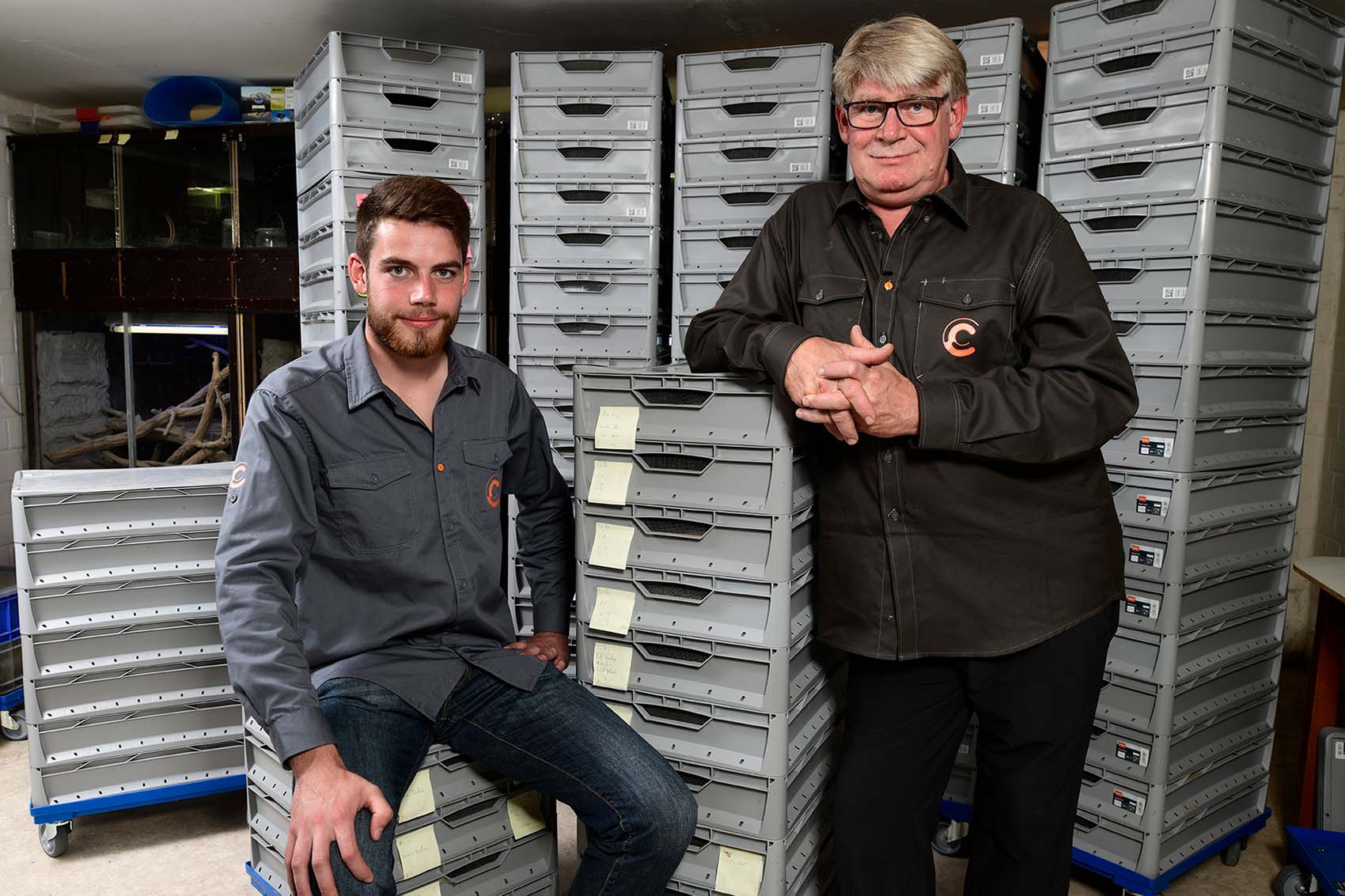
The Key Question: What matters more — aesthetics or results?
The story of the salamander breeder Uwe Seidel also tells a part of the history of modern species conservation. It begins with a fascination for the animal in its natural habitat. You want to know more—to understand the salamander’s life cycle and what this can teach us. You recreate the natural habitat in order to study the animal under controlled conditions. This works at first, but eventually you realize something is missing. Having controlled conditions means animals don’t need to worry about food or predators. They should reproduce readily, therefore. If they don’t, the conditions might not be right after all. Uwe Seidel tested this on his salamanders and came to a conclusion: what is needed, is a systematic salamander rescue.

The forested terrarium with a small stream and substrate is pretty, but less suitable for the controlled and reliable proliferation of fire salamanders. © Federico Crovetto, Shutterstock
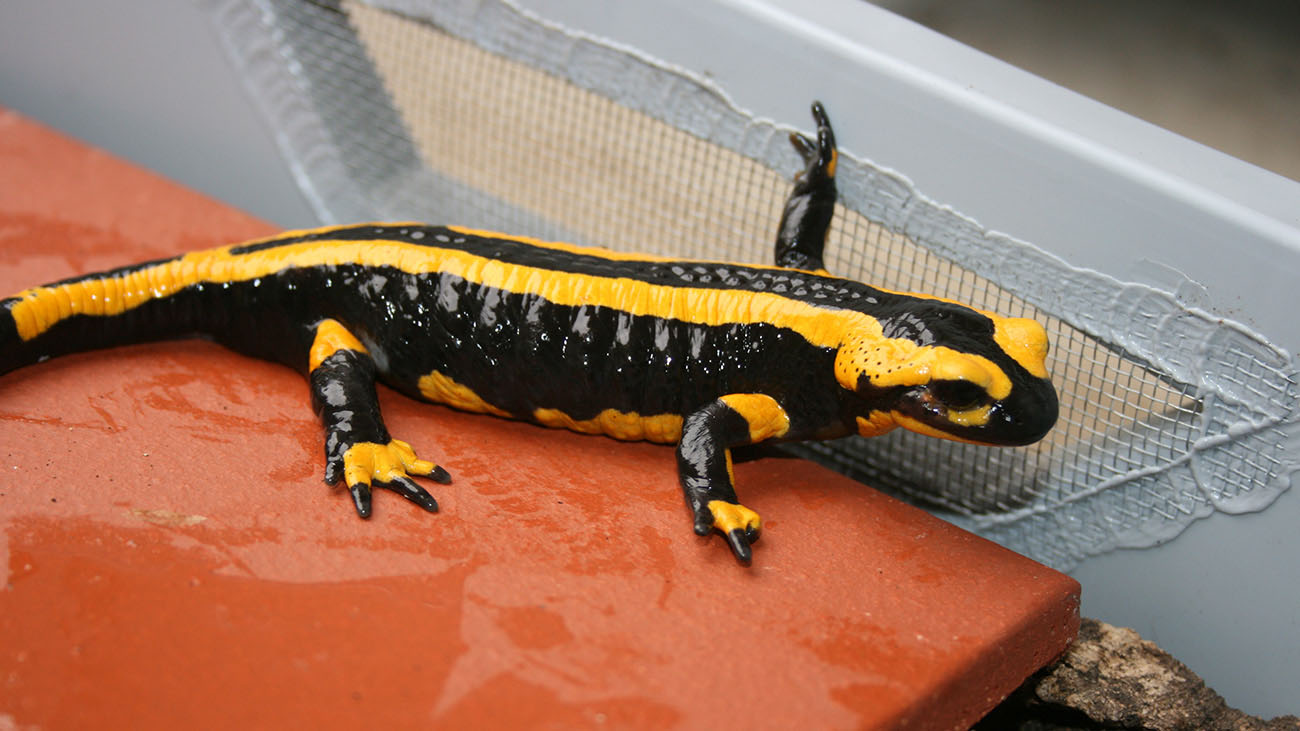
In the end, the fire salamanders were most comfortable in gray storage boxes – at least if you count health, plentiful offspring, and a long life span as the markers of wellbeing. © Uwe Seidel
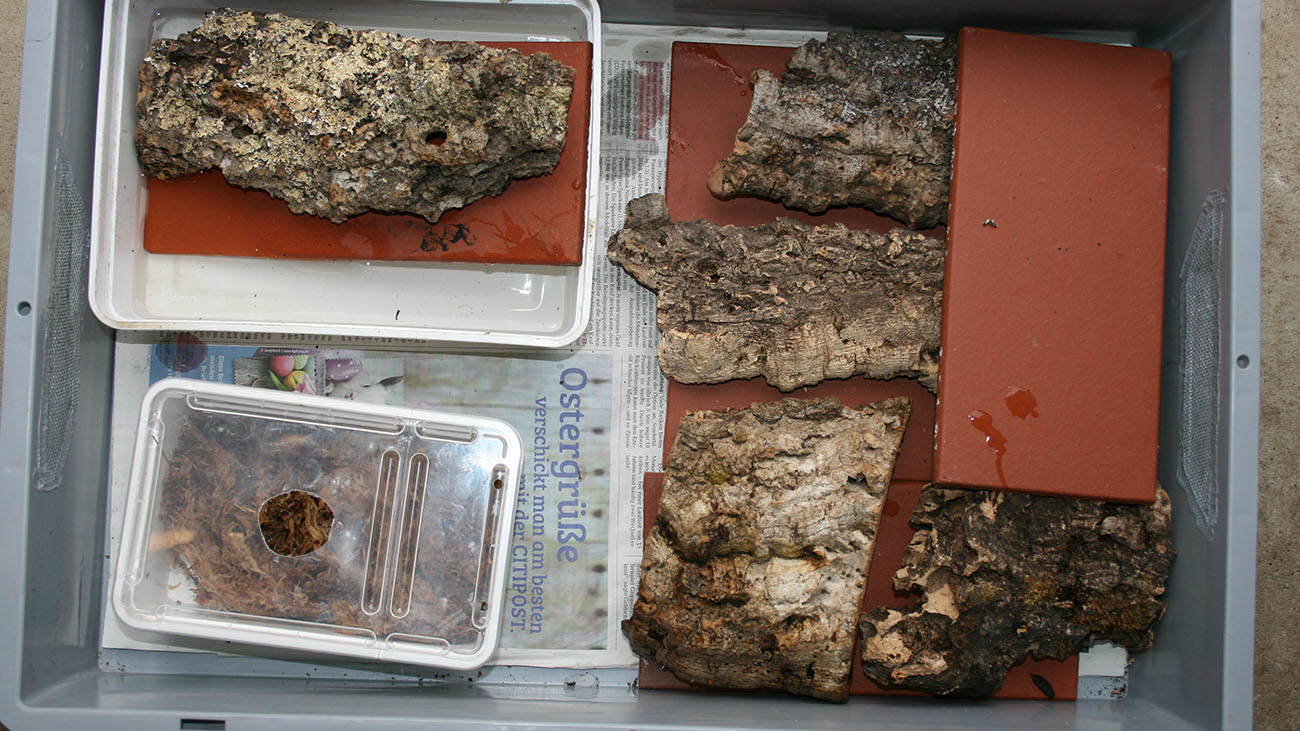
These standardized homes for salamander families are all built with the same components: newspaper substrate, hiding places under rocks and rinds, a moss-lined “moist-box,” and a pool. © Uwe Seidel

Newspaper is mainly cellulose – just like dead leaves. It is sprayed with a bit of water – fire salamanders prefer a dry environment – and replaced every other week. © Uwe Seidel
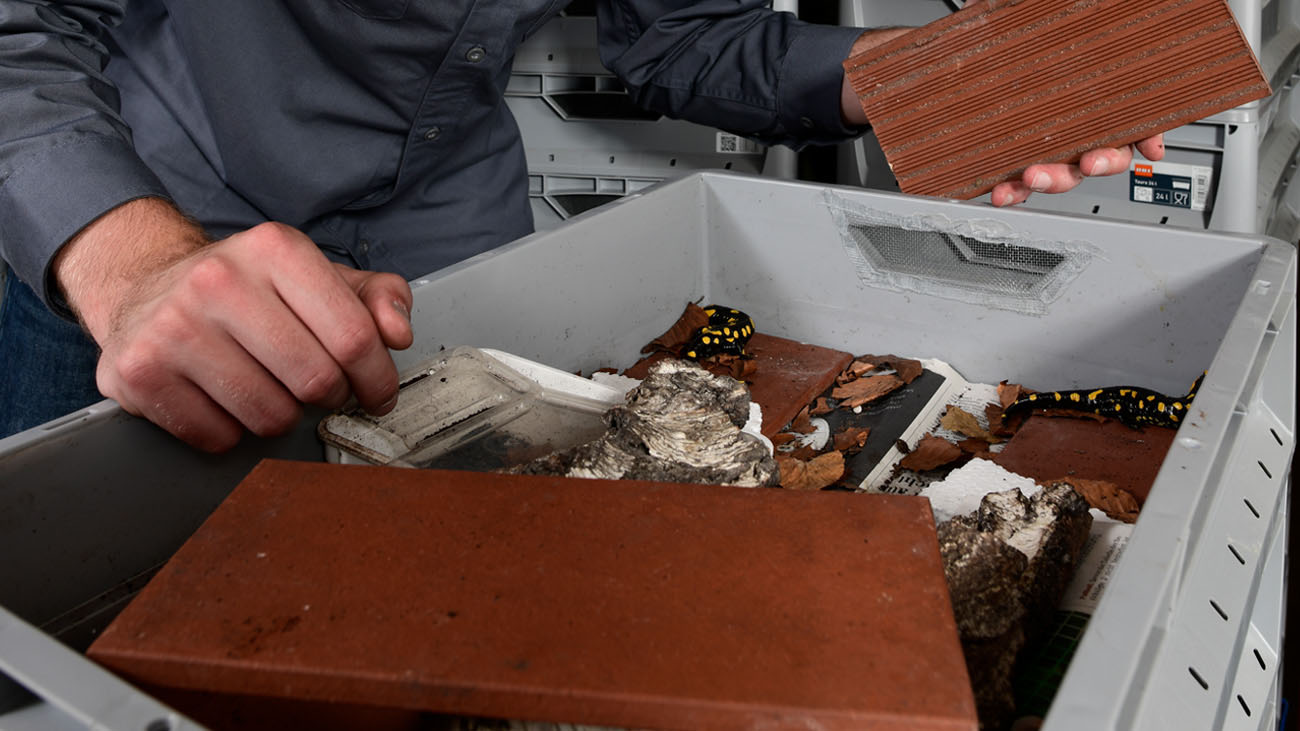
Each storage box apartment is inhabited by a breeding group of two or three animals. Thin rays of light filter in through the air vents on the side – resembling the dappled light of the forest floor. The nocturnal animals only awaken when even this light disappears. © Benny Trapp, Frogs & Friends
Fire salamanders are clean freaks
The forest terrarium presents its own dangers for the salamanders – different ones than they face in the forest. The climate fluctuates, it becomes too dry or stays too damp … In short: salamanders are stressed out trying to find a comfortable spot in such a naturally landscaped terrarium. In the end, Uwe Seidel’s love for the animals convinced him to abandon the pretty terrariums and instead turn to reliable, practical storage boxes – and the animals thank him for it with outstanding health and progeny.
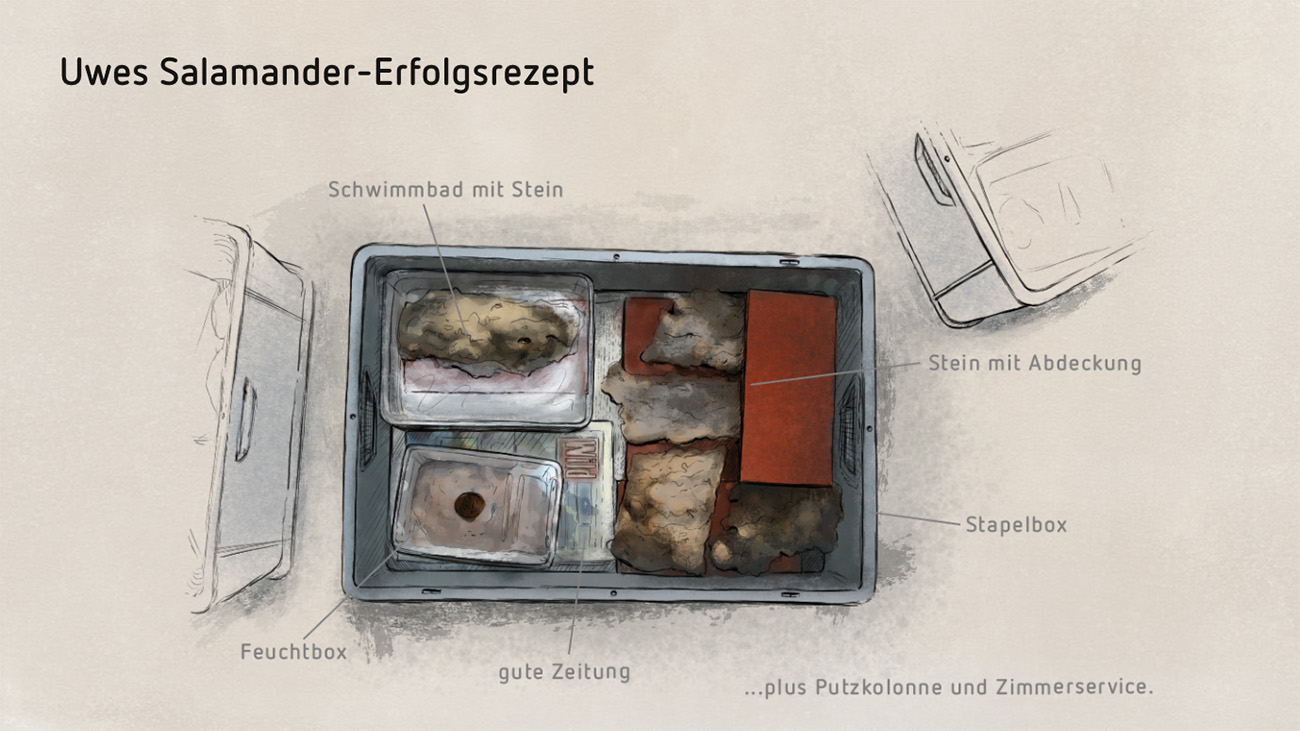
Should I support this?
Your aesthetic and your ethical side may ask – is this allowed? Breeding salamanders in plastic boxes? Is this appropriate? And is it in accordance with animal welfare? There may be different opinions on this, but the fact is: the “box animals” live long and healthy lives, proliferate successfully, and their offspring grow up quickly. The layout of their mini-habitats evidently provides for the basic needs of the salamanders, “rock crevices” offer protection and a suitable microclimate, and no troublesome germs or direct sunlight disturb their wellbeing. The development of this boxed system has another advantage: for the first time, we have the capability to keep and breed salamanders in large numbers when the need arises – and that could soon be the case.
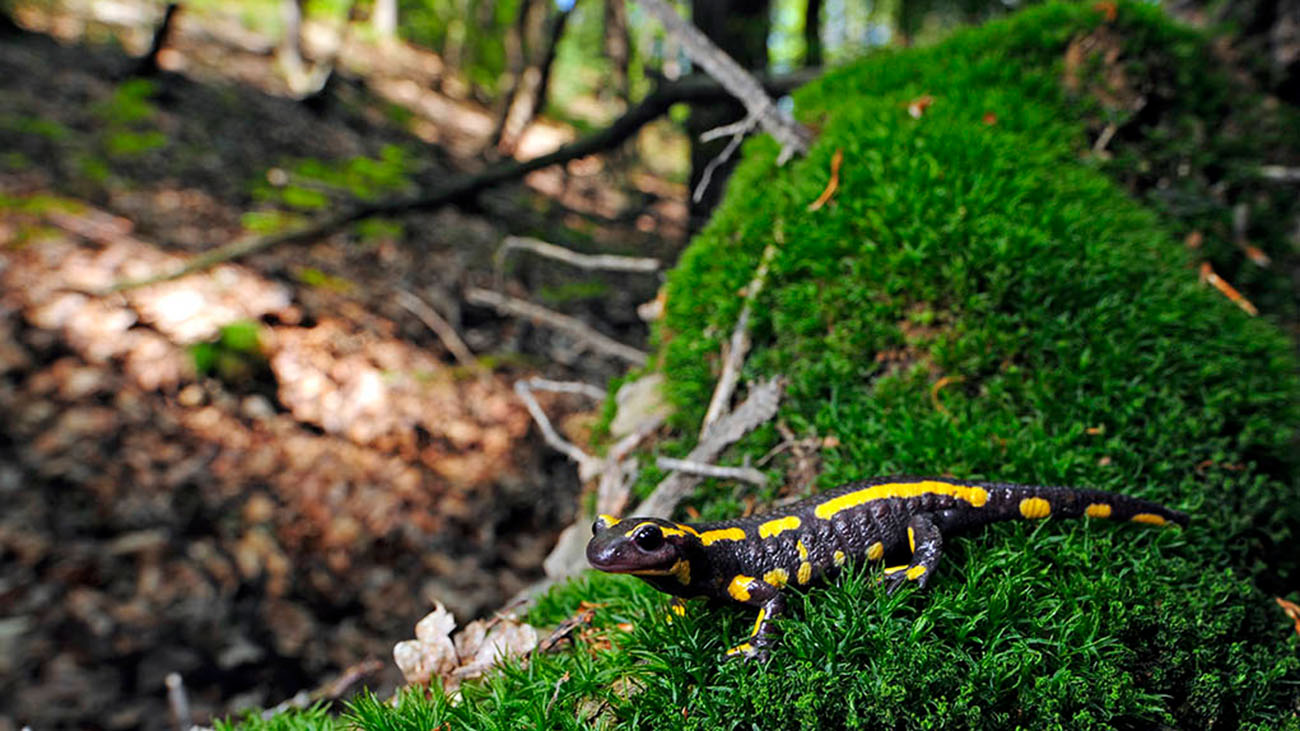
A fungus epidemic is sweeping through salamander populations
The so-called “salamander eater” Bsal (Batrachochytrium salamandrivorans) is originally from Asia and probably reached European soil years ago in The Netherlands or Belgium. Ever since, the fungus has been spreading to the south and the east. If it appears in a new habitat, almost the entire population of salamanders dies. Researchers are especially concerned about the high mortality rate: even though the fire salamander is currently not endangered as a species, the fungus could lead to the disappearance of entire regional subtypes. This is where the Citizen Conservation salamander breeders come into play. If we manage to conserve a sufficient number of the respective “geo-types” within Citizen Conservation in time, we have the option to release the original types into the wild again later. How exactly this can work in the case of Bsal epidemics is not yet clear. But one thing is clear: What’s gone is gone.
